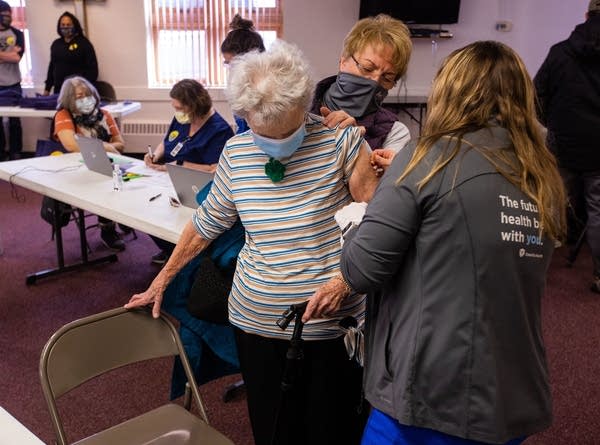April 2 update on COVID-19 in MN: Vaccination pace rising; new case counts climbing

Mary Jane Koepke, 95, (blue mask) receives a shot of the Moderna vaccine in February in Duluth, Minn., while her daughter Kelly Thro (gray mask, center) helps keep her upright.
Derek Montgomery for MPR News file
Go Deeper.
Create an account or log in to save stories.
Like this?
Thanks for liking this story! We have added it to a list of your favorite stories.


